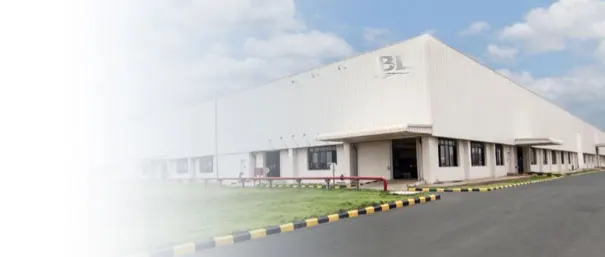ASTM 309S Stainless Steel: High-Temperature Austenitic Alloy for Oxidizing Environments
ASTM 309S stainless steel (UNS S30908) is a high-chromium, high-nickel austenitic alloy specifically engineered for elevated temperature applications where oxidation resistance is critical. With a nominal composition of 23% chromium and 13% nickel, this grade outperforms standard 304/316 alloys in continuous service up to 1000°C (1832°F). Its stabilized low-carbon variant (309S) minimizes carbide precipitation during welding, making it ideal for furnace components, heat exchangers, and chemical processing equipment. This technical guide covers its metallurgical properties, thermal performance, fabrication considerations, and industry-specific applications.
1. Chemical Composition (ASTM A240/A480 Specification)
| Element | Content Range | Functional Role |
|---|---|---|
| Carbon (C) | ≤ 0.08% | Minimized to prevent intergranular corrosion; enhances high-temperature ductility |
| Chromium (Cr) | 22.00 – 24.00% | Forms dense Cr₂O₃ oxide layer; primary contributor to oxidation resistance at elevated temperatures |
| Nickel (Ni) | 12.00 – 15.00% | Stabilizes austenitic microstructure; improves thermal shock resistance and creep strength |
| Manganese (Mn) | ≤ 2.00% | Enhances hot workability; partial substitute for nickel in cost-sensitive applications |
| Silicon (Si) | ≤ 1.00% | Improves scale resistance at temperatures above 800°C; aids in deoxidation during melting |
| Phosphorus (P) | ≤ 0.045% | Residual impurity; controlled to maintain high-temperature mechanical integrity |
| Sulfur (S) | ≤ 0.030% | Minimized to prevent hot cracking during fabrication and welding operations |
| Iron (Fe) | Balance | Base matrix element; provides structural stability |
2. Mechanical Properties at Elevated Temperatures
| Property | Room Temperature | 500°C (932°F) | 800°C (1472°F) |
|---|---|---|---|
| Tensile Strength (MPa) | ≥ 515 | ≥ 350 | ≥ 180 |
| Yield Strength (MPa) | ≥ 205 | ≥ 140 | ≥ 70 |
| Elongation (%) | ≥ 40 | ≥ 25 | ≥ 15 |
| Modulus of Elasticity (GPa) | 193 | 170 | 130 |
Note: Properties degrade gradually with prolonged exposure above 600°C due to carbide coarsening
3. Thermal and Oxidation Resistance
- Maximum Continuous Service Temperature: 1000°C (1832°F) in air; 1050°C (1922°F) for intermittent service
- Oxidation Rate: < 0.1 mm/year at 900°C (1652°F) in dry air; forms protective Cr₂O₃/MnCr₂O₄ spinel layer
- Thermal Expansion (20-1000°C): 18.5 μm/m·°C (comparable to 310S but higher than ferritic grades)
- Thermal Conductivity (100°C): 14.2 W/m·K (25% lower than carbon steel; consider in heat exchanger designs)
- Creep Resistance: Superior to 304/316; stress-to-rupture (100,000h) at 700°C = 25 MPa
4. Fabrication and Processing Guidelines
- Hot Forming: Perform at 1150-1250°C; avoid working below 900°C to prevent cracking. Post-form annealing at 1050-1120°C required to restore corrosion resistance.
- Cold Forming: More difficult than 304 due to higher work hardening rate; intermediate annealing recommended for complex shapes. Springback allowance: 10-15% greater than carbon steel.
- Machining: Use carbide tools (grade K10-K20); recommended speeds: 60-90 m/min for turning, 30-50 m/min for drilling. Coolant: sulfurized or chlorinated oils for heavy cuts.
- Welding: Preferable methods: TIG (GTAW) or MIG (GMAW) with ER309L filler. Preheat not required; interpass temperature < 150°C. Post-weld annealing at 1050-1100°C for critical applications.
- Heat Treatment: Solution anneal at 1030-1150°C followed by water quench or rapid air cool. Avoid slow cooling (50-800°C range) to prevent sigma phase formation.
5. Comparative Analysis: 309S vs. 310S vs. 304
| Property | ASTM 309S | ASTM 310S | ASTM 304 |
|---|---|---|---|
| Chromium Content | 22-24% | 24-26% | 18-20% |
| Nickel Content | 12-15% | 19-22% | 8-10.5% |
| Max Service Temp (Continuous) | 1000°C | 1150°C | 870°C |
| Oxidation Resistance | Excellent | Superior | Moderate |
| Cost Relative to 304 | ~1.8x | ~2.2x | 1.0x |
| Typical Applications | Furnace parts, kiln liners, heat treatment baskets | Radiant tubes, burner components, sulfuric acid equipment | Food processing, architectural, general corrosion resistance |
6. Industry-Specific Applications
Thermal Processing Equipment
Heat treatment furnaces (retorts, muffles), annealing covers, and continuous casting components. Resists scaling in cyclic heating/cooling up to 980°C. Compliant with AMS 5523 for aerospace heat treatment.
Chemical and Petrochemical
Sulfur recovery units, reformer tubes, and catalytic converter housings. Withstands carburizing atmospheres and thermal shock in hydrogen-rich environments (e.g., ammonia synthesis).
Power Generation
Boiler superheater tubes, flue gas ducting, and biomass gasifier components. Performs in SO₂-containing exhaust gases up to 850°C without catastrophic oxidation.
Automotive and Aerospace
Exhaust manifold wrappings, turbocharger housings, and jet engine components. Retains 60% of room-temperature strength at 700°C (vs. 40% for 304).
7. Selection Criteria and Limitations
- Sulfur-Containing Environments: Avoid in reducing atmospheres with H₂S above 300°C; susceptible to sulfidation. Consider alloy 330 or 600 for severe conditions.
- Thermal Cycling: Thermal expansion coefficient 50% higher than ferritic steels; design must accommodate expansion joints in long runs.
- Welding Precautions: Use ER309L or ER309LSi filler to match base metal composition. Post-weld cleaning with stainless steel wire brush to remove slag.
- Surface Finish: Mill finish (2B) standard for industrial applications; electropolished for pharmaceutical/food contact surfaces (though 309S is rarely food-grade).
- Alternative Grades: For temperatures above 1050°C, specify 310S; for carburizing atmospheres, consider 314 or RA330.
8. Request a Technical Quote for ASTM 309S
Require ASTM 309S stainless steel in custom forms (plates, sheets, coils, or welded pipes)? Our metallurgical team provides tailored solutions for high-temperature applications with full mill test certification (EN 10204 3.1/3.2). Submit your specifications—including dimensions, surface finish, and quantity—for a competitive quote within 24 hours.
.content-wrap { font-family: Arial, Helvetica, sans-serif; color: #333; line-height: 1.8; width: 100%; max-width: 1200px; margin: 0 auto; padding: 20px 30px; }
.article-title { font-size: 28px; color: #222; font-weight: 700; margin: 0 0 30px; padding-bottom: 15px; position: relative; border-bottom: 2px solid #eee; }
.article-title::after { content: “”; position: absolute; left: 0; bottom: -2px; width: 120px; height: 2px; background-color: #2c5282; }
.article-intro { font-size: 16px; color: #444; margin: 0 0 40px; text-align: justify; }
.section-title { font-size: 22px; color: #2c5282; font-weight: 600; margin: 50px 0 25px; padding-left: 15px; border-left: 4px solid #2c5282; }
.table-container { width: 100%; overflow-x: auto; margin: 0 0 30px; }
.spec-table, .compare-table { width: 100%; border-collapse: collapse; background-color: #fff; box-shadow: 0 2px 5px rgba(0,0,0,0.05); }
.spec-table th, .spec-table td, .compare-table th, .compare-table td { padding: 12px 15px; border: 1px solid #eee; text-align: left; }
.spec-table th, .compare-table th { background-color: #f8f9fa; color: #2c5282; font-weight: 600; }
.spec-table tr:hover, .compare-table tr:hover { background-color: #fafafa; }
.property-list, .process-list, .precaution-list { padding-left: 20px; margin: 0 0 35px; }
.property-list li, .precaution-list li { margin: 0 0 12px; font-size: 15px; }
.process-list li { margin: 0 0 18px; font-size: 15px; }
.property-list strong, .process-list strong, .precaution-list strong { color: #2c5282; }
.application-grid { display: grid; grid-template-columns: repeat(auto-fit, minmax(280px, 1fr)); gap: 25px; margin: 0 0 40px; }
.application-item { padding: 20px; background-color: #fafafa; border-radius: 6px; border: 1px solid #eee; }
.application-item h3 { font-size: 18px; color: #2c5282; margin: 0 0 12px; font-weight: 600; }
.application-item p { font-size: 14px; color: #555; margin: 0; }
.quote-cta-section { margin: 60px 0 20px; padding: 30px; background-color: #f8fafc; border-radius: 8px; border: 1px solid #e2e8f0; }
.quote-cta-content { max-width: 800px; margin: 0 auto; text-align: center; }
.quote-cta-content p { font-size: 16px; color: #475569; margin: 0 0 30px; line-height: 1.8; }
.quote-cta-btn { display: inline-block; padding: 12px 35px; background-color: #2c5282; color: #fff; font-size: 16px; font-weight: 600; text-decoration: none; border-radius: 4px; transition: background-color 0.3s ease; }
.quote-cta-btn:hover { background-color: #1e3a8a; }


